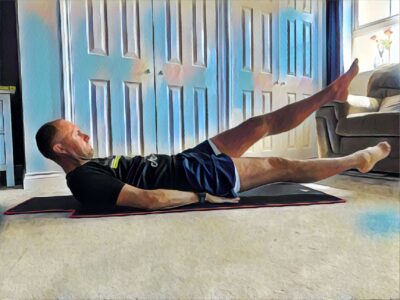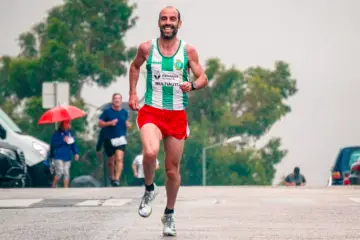As a triathlete in my 40’s I regularly get challenged on when I am going to stop. Frankly, forget that. I think as soon as I stop training and conditioning my body it is a slippery slope. I haven’t yet ticked my bucket list item of a full Ironman and have every intention of still doing that. Not prepared to settle for a half-Iron distance only. This post is to help with triathlon recovery tips for older athletes. Train smarter as you age. Don’t let age stop you training and racing. Age is only a number.
What is an older athlete?
For me this is anyone over 40. From 40 onwards it becomes harder to compete and recover from any injuries. As you age past 50 you experience muscle wastage and need to combat this with more resistance and strength and conditioning. This natural loss of muscle mass is called sarcopenia in you case you want to impress your friends with your medical knowledge. I speak from my own experience of how my body reacts as I approach 50 and have friends in the 50’s still competing at a high level.

Why does recovery matter?
At any age listening to your body is important. Look at the success of Whoop that has built an entire business model around a device to measure you exertion and recovery. Recovery becomes especially important for triathletes over 50 years old. This is because unlike younger athletes their bodies are not made of rubber bands! As recently as this week I have pushed things too hard on my bike and not recovered. My left knee now swollen and telling me all about it. That prompted me to put together this article as a reminder for myself as much as everyone else.
10 Top Tips to help you recover faster
- Make time for enough quality sleep – Quality sleep is essential for overall recovery. During deep sleep, the body releases growth hormone, crucial for muscle repair and regeneration. Adequate sleep also supports immune function and mental well-being. Less sleep. Slower repair. More likelihood of sickness and injury. Older athletes may have a slightly compromised immune function compared to younger counterparts.
- Stay well hydrated – Dehydration can impair performance and delay recovery. Proper hydration aids in nutrient transport, temperature regulation, and helps flush out metabolic waste products generated during exercise. Note that beer does not count as staying hydrated! Much as I love a beer on the weekend. I know it is doing nothing for my training. All things in balance.
- Consider your nutrition after every workout – Consuming a mix of carbohydrates and protein within the post-exercise window (30-60 minutes) is key. It replenishes glycogen stores, promotes muscle protein synthesis, and accelerates recovery. Plus you feel like you earned it!
- Warm down as part of your training – Gentle, low-intensity activities enhance blood flow to muscles, facilitating the removal of metabolic by-products. Active recovery also helps prevent stiffness and promotes joint mobility.
- Remember to stretch – I am shocking at making time to stretch to warm up and on a day to day basis. But I recognise I should do more of this. Do as I say not as I do. Stretching reduces muscle tightness, improves flexibility, and aids in the realignment of muscle fibers. Enhanced mobility reduces the risk of injuries and promotes better movement patterns.
- Get a foam roller – And use it. Foam rolling, or self-myofascial release, helps break up adhesions and knots in muscles and fascia. It improves blood circulation, reduces muscle soreness, and enhances overall flexibility.
- Cold Water Immersion – All the rage now is cold water or ice baths. And with good reason. Cold water baths or contrast water therapy constrict blood vessels, reducing inflammation and muscle soreness. The cold also helps numb pain receptors, providing relief after intense workouts.
- Use Compression clothing not just for training – Compression garments improve venous return and reduce muscle oscillation, potentially decreasing muscle damage and inflammation. They can enhance recovery by promoting better circulation. So, don’t just use them for your running. Let your friends enjoy them in the pub after!
- Sports Massage – Sports massages alleviate muscle tension, enhance blood flow, and reduce muscle soreness. Massage also helps identify and address specific areas of tightness or imbalance. Think of it as pro-active physio. Older triathletes may have additional life stressors, and proper recovery provides an opportunity for relaxation and stress relief. A massage can be a good way of managing any of these stresses for older triathletes.
- Make time for rest – Every day doesn’t need to be a training day. I know it is hard to take time out but your body needs it especially as you get older. Rest days are essential for preventing overtraining. Older triathletes are more susceptible to overuse injuries due to wear and tear on joints and muscles over time.

Add some core training into your workouts. Check out our guide to a simple core workout for triathletes that you can fit in your day in under 10 mins.
Age is just a number
Recovery is a foundational aspect of effective triathlon training for individuals over 50. It helps prevent injuries, supports overall health, and ensures that athletes can continue to enjoy the physical and mental benefits of participating in triathlons over the long term.
For some buying tips read our guide to the best eBikes for Seniors. I am a complete convert on eBikes since riding them and now love them. Perfect excuse for an n+1 bike.



0 Comments